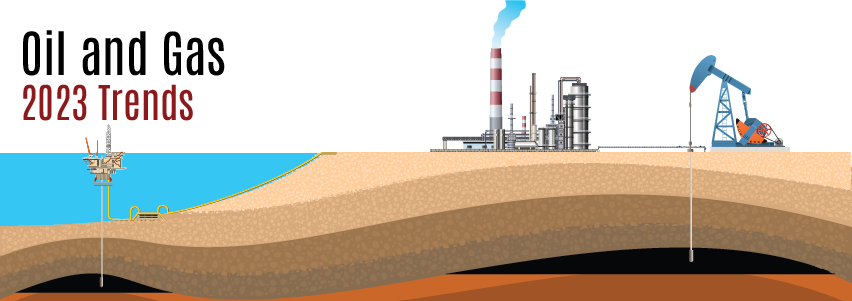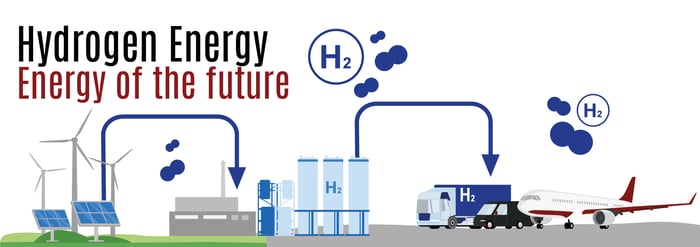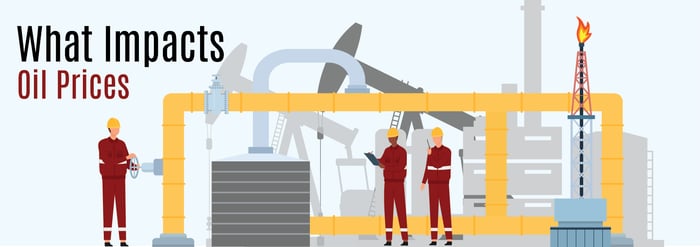Oil and Gas Trends
Business News • 4 min read • Mar 22, 2023 10:57:11 AM • Written by: Natasha Osborne

Oil and Gas are the main industries in the energy market and play an influential role in the global market. We rely on oil for transportation, heating and electricity, industrial production, and manufacturing. Gas fuels many industrial processes that produce materials and goods and is an ingredient in products such as plastics.
Oil & Gas Trends
A new energy era is upon us, with the demand for clean energy increasing, we need to understand how companies in the Oil & Gas industry plan to transition for a low-carbon future. Research conducted by Deloitte, explores trends that will likely influence the direction of the industry in the next year. Based on the findings from Deloitte’s report, we have been able to understand how this will impact the Oil & Gas industry.
Upstream
The upstream industry’s capital discipline is likely to be a continuing trend, rather than growth. As oil prices rise, Oil & Gas companies have more opportunities to fund their net zero commitments. However, the dilemma they face is either prioritising shareholder pay-outs or increase their hydrocarbon investment rate.
New policies are anticipated to accelerate the clean energy transition and investment into low-carbon businesses. With around 50% of survey respondents agreeing a higher demand for low-carbon energies and scalable, economical low-carbon use cases are needed to accelerate the clean energy transition.
- Policy push: Over $750 billion cumulatively added by new energy policies in Europe such as ‘Fit for 55 Climate Package’ and ‘Repower EU’. In the US the following policies ‘Infrastructure Investment and Jobs Act’ in 2021 and ‘Inflation Reduction Act’ in 2022.
- Clean energy investments: Supportive policies along with national clean energy strategies are boosting the share of clean energy spending as part of oil and gas CAPEX spending, which increased from below 2% to 5% between 2020 and 2022.
Supportive policies, combined with high Oil & Gas cash flows in 2022, have enabled Oil & Gas companies to invest in clean energy. Increases in natural gas investment are expected in 2023, as well as investments that reduce the greenhouse gas intensity of natural gas and related infrastructure.
Oil Price Impacts
Oil prices have recovered to $80/bbl after reaching negative figures in April 2020. It has been suggested that high oil prices, display less capital discipline, focusing more on the core business over sustainability. It is often assumed high oil prices could slow the energy transition. However, 76% of surveyed Oil and Gas executives state ‘oil prices above $60 the barrel will most likely boost or complement their energy transition’.
The current cycle of higher oil process reveals two new trends:
- Oil and Gas companies these days are more disciplined with production and capital guidance.
- High oil prices are allowing companies to fund their net-zero commitments.
Stronger oil prices encourage investment in riskier and expensive green solutions. The responsibility doesn’t fall on one single stakeholder to invest in the necessary costs and cover the risks. All participants in the Oil and Gas value chain are important as they are involved in more than half of planned CCUS (carbon capture, utilisation, and storage) projects.
Clean Energy
As the low carbon transition gains momentum, O&G companies face increasing pressure to adapt their business models. Since the beginning of 2021 oil prices have been rising. However, the upstream activity in Mergers and Acquisitions (M&A) transactions, which typically follows oil prices, is well below pre-pandemic levels. ‘Companies pursuing their net-zero goals are either looking to acquire low-carbon-intensity barrels or divest the high-intensity ones’.
An attractive offering price may not necessarily be enough to encourage a response from a buyer, focused on meeting its net zero targets. M&A activities will need to be financially growing as well as supporting ESG (Environmental Social Governance) goals. But only 12% of upstream deals in the US during 2021 year-to-date highlighted reduction in emissions. Multiple factors could have resulted in this, such as a lack of standardised reporting practices. The survey suggests two-thirds of respondents suggest ‘uniform reporting’ guidelines and clarity of the impact of ESG reporting can help accelerate the adoption of ESG in M&A.
The deal making process under the energy transition requires O&G companies to establish a new equation that would consider both the asset price and ESG profile. These acquisitions would not only broaden the asset base but help buyers achieve their ESG goals faster and efficiently.
We hope you enjoyed this week's blog. Let us know your thoughts and what you'd like to hear about next! If you found the blog interesting, why not give it a share?
Reach the World. Giving Made Easy with Impact.
Related Articles

Tips & Tricks
Hydrogen Energy- Energy Of The Future?

Business News
Achilles Oil and Gas Africa Membership

Business News
What Impacts Oil Prices
Don't Miss Out On A Thing
Sign up and Join Our Newsletter Today